Special sessions
Funding Agency Talks
Session 1: Monday October 3, 14:00-15:30, Liberty I
Session 2: Remote; link in the printed conference program book
Abstract
MECC 2022 will organize two panel sessions for federal funding agencies. An in-person session will be held during 2:00 p.m. ~ 3:30 p.m. on Monday October 3rd, where Dr. Yueyue Fan, Dr. Harry Dankowicz and Dr. Jordan Berg will be the panelists, presenting the relevant funding programs at NSF, followed by Q&A and discussions with the attendees. During 2:00 p.m. ~ 3:30 p.m. on Tuesday October 4th, Dr. Frederick Leve from Air Force Office of Scientific Research (AFOSR) and Dr. Juan P. Wachs from NSF/CISE will participate with remote attendance. Presentations on the relevant funding programs will be made, followed by the online Q&A and discussion with the attendees.

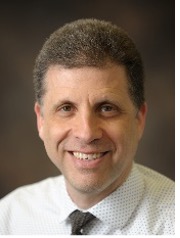
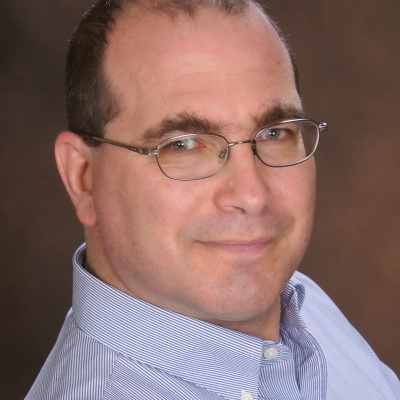
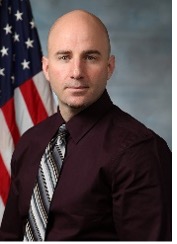
Dr. Juan P. Wachs is a Program Director at NSF/CISE responsible for the robotics programs. In this session, Dr. Wachs will discuss the possibilities related to robotics programs at NSF, with an emphasis on the CISE directorate, and IIS division. The foundational research in robotics (FRR) will be showcased as the flagship program in robotics at NSF.
Rapid Fire Presentation Session
Monday, October 3
10:00AM-11:30AM
Newport III, IV, and V
MECC 2022 provides a rapid-fire presentation of late-breaking research results in
modeling, estimation, and controls. Each rapid-fire talk provides a 5-min
presentation followed by poster demonstrations during coffee breaks.
Newest Advances in Systems and Control from Recent DCSD CAREER Awardees
Special Session MoAT4, Monday October 3, 10:00-11:30, America I & II
Special Session TuAT3, Tuesday October 4, 10:00-11:30, Liberty III
Session Organizers
Robert G. Landers, University of Notre Dame
Atul Kelkar, Clemson University
Abstract
This special session brings together recent CAREER awardees from the Dynamics,
Control and Systems Diagnostics program at the National Science Foundation to
discuss their research. You will hear about the latest advances in a wide variety of
topics covering both fundamental understanding and cutting‐edge applications. The
format of this session will provide the audience ample time for questions and for
the entire group to explore future directions in the field of systems and controls.
Session Talks
Toward Lifelong Safety of Autonomous Systems in Uncertain and Interactive Environments
Changliu Liu, Carnegie Mellon University
Abstract
The research objective of this project is to study the design principles to achieve
optimal lifelong safety of autonomous robotic systems in uncertain and interactive
environments (UIEs). For example, this capability will enable industrial
collaborative robots to safely and optimally work with unfamiliar human workers in
novel tasks throughout the robots' lifetime. The safety requirements are represented
as constraints on the choices of the autonomous systems to achieve their tasks. Our
goal is to optimally augment existing systems (existing hardware platforms with
task-oriented controllers) with advanced cross-task safe guardians that will monitor
and modify the nominal task-oriented actions. The optimality refers to 1) optimal
task performance when safety is assured; 2) optimal actions before inevitable
failures, i.e., detect these inevitable failures as early as possible and inform
users; and 3) optimal actions after any failure, i.e., never make the same mistake
again. To achieve lifelong safety, we will equip the cross-task safe guardian with
continual learning to track the time-varying dynamics of the UIEs and adaptive safe
control to adjust the control strategy according to newly learned dynamic models. To
achieve optimality in lifelong safety, we will equip the safe guardians with a
cross-platform intelligent optimizer that can automatically optimize the safe
guardians and account for inevitable failures. The optimizer will enable knowledge
sharing for all guardians to learn from others' successes and mistakes.
Functional Monolithic Holograms for Ultrasonics
Shima Shahab, Virginia Tech
Abstract
The use of ultrasonic holograms to generate complex volumetric pressure patterns
from single-element planer transducers is a game-changing approach with nearly
limitless possibilities. This approach is particularly useful in applications where
an arbitrary acoustic field must be formed and the acoustic waves must pass through
various regions with non-homogeneous qualities. A few examples include ultrasound
medical treatment, contactless energy transfer, and particle manipulation. We
present the acousto-elastic dynamics of low- to high-intensity monolithic holograms
for the formation of complex spatially distributed ultrasonic fields. We will cover
a wide range of topics, from fundamental theoretical investigation to high-impact
implementations, by (1) focusing on the acoustic wave propagation and guiding
mechanisms in various acoustic holograms; (2) identifying the nonlinear effects in
acoustic holograms that can successfully represent the system dynamics under low to
high-intensity acoustic fields; (3) validating the developed acousto-elastic models
for hologram designs; (4) exploiting the fundamentally new physical phenomena in
acoustic holograms. Our findings will enable frequency selectivity, wavefront
shaping and control, and the engineering of nonlinear response features related to
acoustic holographic lenses in multi-functional high-fidelity operations.
Bridging the Gap between Safety and Real-Time Performance in Receding-Horizon Trajectory Design for Mobile Robots
Ramanarayan Vasudevan, University of Michigan
Abstract
Autonomous systems offer the promise of providing greater safety and performance in
the healthcare setting. However, this positive impact will only be achieved if the
underlying algorithms that control such systems can be certified to behave robustly
despite model uncertainty. This talk describes a technique called Reachability-based
Trajectory Design, which constructs a parameterized representation of the forward
reachable set that it then uses in concert with predictions to enable real-time,
certified, collision checking. This approach, which is guaranteed to generate
not-at-fault behavior, is demonstrated across a variety of different real-world
platforms including manipulators, prosthetics, and walking robots.
Augmenting the Aw-Rascle-Zhang Traffic Flow Model with a Distributed Energy Equation
Stephanie Stockar, The Ohio State University
Abstract
Traffic congestion has a significant impact on travel time, idling, and
transportation energy demand. Controlling vehicles using boundary control (via
ramp-metering) or in-domain control (via platooning) has been explored to reduce
traffic jams, traffic density, and travel time. However, the objectives of these
control problems don’t explicitly include fleet energy. Unlike car-following
(microscopic) models that calculate the forces acting against each individual
vehicle and evaluate the energy at the wheel via the road load equation, there is no
description of energy use in macroscopic models. Therefore, an extension of models
based on partial differential equations (PDEs) that includes a distributed energy
equation is needed. We postulate that, by formulating an energy minimization problem
using a macroscopic traffic model with a distributed energy equation, it is possible
to develop strategies for controlling traffic flow and inter-vehicle speed that not
only reduce traffic jams, but also minimize energy usage all while being less
computationally intensive over large stretches of road compared to a microscopic
approach. This talk will present the derivation of a distributed road load equation
that characterizes the energy usage along a stretch of road. The Aw-Rascle-Zhang
model, which is a system of nonlinear hyperbolic partial differential equations, is
augmented using the energy equation and the results are compared against the
Improved Intelligent Driver Model and the Simulation of Urban Mobility (SUMO). The
contribution of this work is a distributed, macroscopic description of energy usage
that can be used for the formulation of energy minimization starting from a PDE.
Modeling and Control of Cardiovascular System
Yuncheng Du, Clarkson University
Abstract
Heart failure (HF) occurs when the heart cannot sufficiently pump blood to sustain
the life. Over 6.5 million Americans have HF and about 0.88 million are newly
diagnosed every year. Roughly, 10 percent of HF patients progress to end-stage HF
when conventional drug treatments become ineffective and heart transplant becomes
the best therapy. Since the need for donor hearts far exceeds their availability,
alternative therapies to increase the heart’s pumping force are of keen interest. In
one therapy, a pump, a ventricular assist device (VAD), is implanted into the
thoracic cavity to assist with blood circulation. However, challenges exist for the
broad application of VAD in clinics. Personalized hemodynamic modeling of the heart
managed by a VAD plays an important role to predict therapeutic outcomes and improve
treatment, but the complexity of cardiovascular system and variability among
patients introduce significant challenges to provide accurate model predictions. In
addition, the efficiency of current VAD is limited, as the operation of the pump is
set at a constant speed, which cannot compensate for physiologic differences in
patients or physiologic changes for the same patient over time. In this talk, I will
discuss some of our recent efforts to address these challenges; examples include the
development of a model to consider the effect of baroreflex regulation on the
cardiovascular-VAD system and the design of a model-free adaptive controller to
adjust the operation of the VAD with easily measured quantities of the pump.
Following that, an overview of our current work will be discussed at the end.
Dynamic & Control-Based Approach to Cellular Mechanotransduction Investigation
Juan Ren, Iowa State University
Abstract
Mechanotransduction–the continual process of sensing, transmission and response to
external mechanical stimuli of live cells–is essential for maintenance of normal
cell, tissue, and organ functioning. Investigating mechanotransduction can bridge
the gap between cellular mechanical behaviors and biochemical/morphological
alterations and significantly advance studies in biomedical sciences and
engineering, including the diagnosis and treatment of numerous diseases such as
fibrosis, cancer initiation and metastasis. Despite the achievements in
mechanotransduction studies including the identification of some of the key
mechanosensors, the complex dynamics of cell internal structure (e.g., cytoskeleton)
and how it responds to a myriad of physical/mechanical stimulus in affecting the
inner workings of mechanotransduction have yet to be well characterized. Therefore,
our goal is to build a suite of dynamics- and control-based tools to sense and model
the cellular mechanotransduction dynamics and 3D dynamic structure in order to
achieve cellular behavior manipulation. Specifically, data-driven and machine
learning tools have been developed to address the modeling and control challenges
raised by the complex behavior of cellular structure and nonlinear dynamics of the
experimental mechanical characterization devices. In this talk, our recent
achievements in cellular dynamic behavior studies, including deep learning-based
cytoskeleton structure modeling and high precision control for cellular mechanical
simulation will be presented.
Bio-Inspired Variable Recruitment Fluidic Artificial Muscle Actuators: Innovations in Modeling, Configuration, and Control
Nicholas Mazzoleni, North Carolina State University
Jeong Yong Kim, North Carolina State University
Emily Duan, North Carolina State University
Matthew Bryant, North Carolina State University
Abstract
Human muscle tissues employ a massively over-actuated architecture in which many
internal degrees of freedom (motor units, MUs) are used in parallel to produce a
single output degree of freedom (muscle tissue contraction), through a hierarchical,
load-adaptive control process called motor unit recruitment. This architecture
allows natural muscle to achieve fast response and a wide gamut of force and
compliance on demand, all while minimizing metabolic energy consumption. Through our
work, we have sought to leverage the advantages of this adaptive actuation and
control structure to improve the efficiency, bandwidth, stiffness control, and
failure tolerance of hydraulic actuation systems for robots and human-assistive
devices. In conventional hydraulic systems, energy loss occurs because the hydraulic
cylinder actuators must be sized for the maximum force requirement of the system;
operating in any submaximal condition means that pressure must be reduced (and
energy shed as heat) by the control valves. We address this problem by replacing
these actuators with fluidic artificial muscle (FAM) “tissues” that utilize a
variable recruitment control strategy inspired by the MU recruitment behavior of
natural muscles. These muscle tissues have the ability to dynamically adapt to
different instantaneous loads by intelligently recruiting different numbers of
actuator elements depending on the load, saving energy by reducing fluid consumption
and minimizing throttling losses. Through a combination of actuator mechanics
modeling, novel configuration and topology design, and hardware validation, we have
created an analysis framework for variable recruitment FAM tissues that will allow
for more sophisticated actuator designs and control architectures.
What Can We Make Out of Control and Learning for Batteries and Electrification?
Huazhen Fang, University of Kansas
Abstract
We live at the dawn of an age of electrification and witness the power lithium-ion
batteries in electrifying key sectors from transportation to renewable energy to
grid infrastructure. However, while standing on their merits, lithium-ion batteries
still face significant performance and safety concerns. This clouds the prospect of
their role in future electrification. An urgent question thus is how to make
batteries work better and live up to their potential. Control and learning theories
have proven as a useful way to develop promising solutions in response to the
question. In this talk, we will present our recent research at the intersections of
these fields, supported in part by the NSF and especially the CAREER Program, and
show our explorations on modeling, design, and control of safety-critical and
high-performance battery systems. The topics will cover physics-informed machine
learning for battery modeling, reconfigurable battery system design, and scalable
control of large-size battery systems. We will further discuss prospective
opportunities and challenges arising out of batteries and electrification.
Simultaneous and Independent Control of Nanostructured Objects through the Use of Coupled External Electric Fields
Kaiyan Yu, State University of New York at Binghamton
Abstract
Micro- and nanoparticles with functional components can be used in an extensive
variety of applications, ranging from nanomanipulation to targeted drug delivery.
The automated manipulation and assembly of micro- and nano-objects would vastly
improve our ability to scale up the production of functional nanorobots, potentially
revolutionizing small-scale manipulation and biosensing techniques in modern
manufacturing, healthcare, and biology. The robust, efficient, and independent
manipulation of multiple particles is limited by the global and coupled influence of
wireless external fields. In this presentation, I will discuss our efforts in light
of the aforementioned challenges to manipulate multiple micro- and nanoparticles
independently and simultaneously using coupled actuation from global electric
fields. I will first present the motion control and planning schemes to manipulate
multiple micro- and nanowires that share global external electric fields in liquid
suspension with a simple, generic set of electrodes. The proposed adaptive robust
motion control has been proven to be stable for precisely driving various types of
particles. The motion planning algorithms significantly reduce the computational
complexity while maintaining suboptimal performance in both the travel time and
distance. Next, the manipulation capability for the different numbers of objects
will be analyzed. Finally, this talk will introduce the manipulation schemes with
applications to functional nanodevice fabrication.
Industry Stories in Controls
Special Session MoBT5, Monday October 3, 14:00-15:30, Newport I
Session Organizers
Dr. Selina Pan, Waymo, Senior Systems Engineer
Dr. Pingen Chen, Tennessee Tech University
Dr. Carrie Hall, Illinois Institute of Technology
Dr. Yan Chen, Arizona State University
Dr. Mahdi Shahbakhti, University of Alberta
Joe Drallmeier, PhD Candidate, University of Michigan
Mehmet Ozkan, PhD Candidate, Texas Tech University
Abstract
Academic research and industry development have a symbiotic relationship. The
insights gleaned from academic research can be propagated into usable products and
technologies by companies. The practical problems identified in industry can also
inspire and develop new academic research topics and areas. This cycle and
relationship is key for researchers to understand and to participate in. To
facilitate these connections, every year, the ASME Dynamic Systems and Control
Division organizes an industry special session at a major controls conference.
The speakers featured in this session have a variety of technical backgrounds and
life experiences. The purpose of this session is to showcase some of the current
industry jobs available to controls students.
Speakers
Xiaoling Han, TuSimple, Senior Director of Sensors and VES

Xiaoling Han (he/him) is the Senior Director of Sensors and Vehicle Embedded Software at TuSimple which is a L4 autonomous trucking company. In his current role, he is responsible for the by wire control and sensor system design, embedded software development, and HW & SW integration. Before he joined TuSimple, he has worked in the automotive industry for more than 13 years, including both Tier1 and OEM. His major domain is safety related ECU software and system development. He has a master degree in automotive engineering and a MBA degree.
Bryan Maldonado, Oak Ridge National Laboratory, R&D Associate Staff
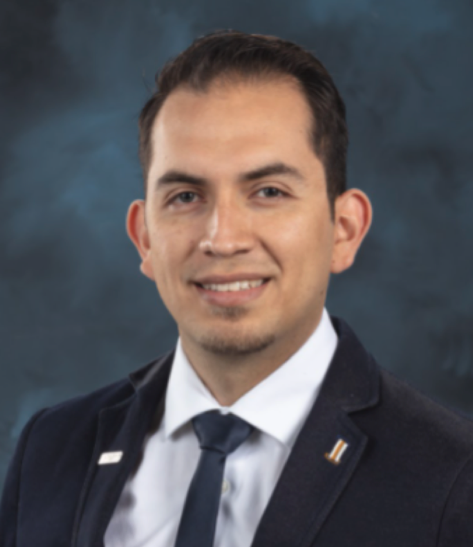
Dr. Bryan Maldonado joined ORNL in early 2020 after finishing his Ph.D. at the University of Michigan under Prof. Anna Stefanopoulou. His research focuses on model-based and model-free identification, estimation, and control of stochastic dynamic systems with an emphasis on machine learning and uncertainty quantification methods. Bryan is an SAE and ASME member, co-host of the ASME Dynamic Systems & Control Division podcast series, and was the recipient of the 2018 Tau Beta Pi Michigan Gamma Scholarship and the 2016 Rackham Summer Award at the University of Michigan.
Scott Hotz, Southwest Research Institute, Assistant Director, Automotive Propulsion Systems
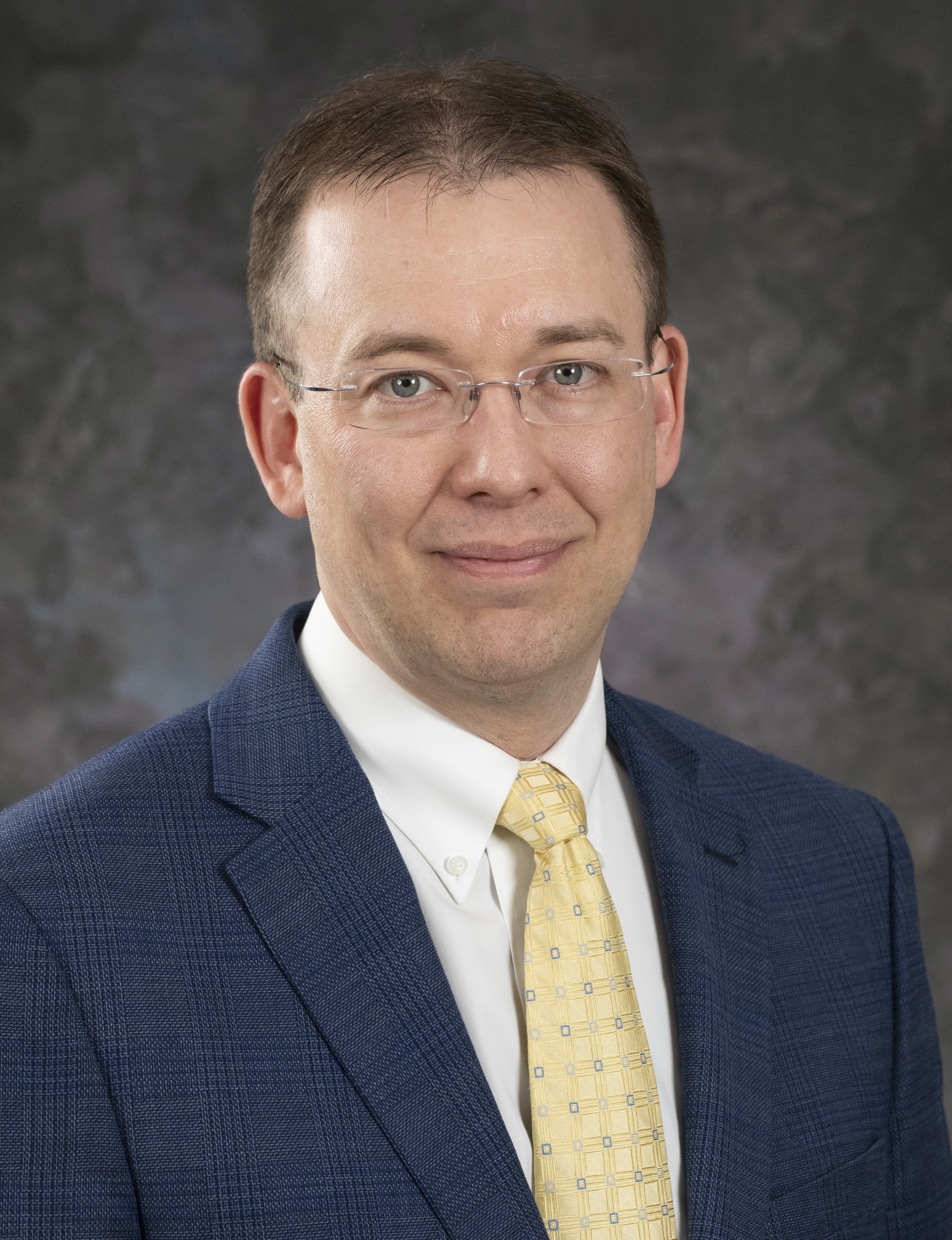
Mr. Hotz established and leads Southwest Research Institute’s Ann Arbor Technical Center, which provides high-efficiency powertrain research and development services for commercial organizations and government agencies. Over his nearly 24-year career, he has provided powertrain control systems engineering leadership for a wide range of complex research and development programs. As Principal Investigator of an ARPA-e NEXTCAR project, Mr. Hotz led a multidisciplinary team to leverage near-term CAV technologies to reduce the energy consumption of a Toyota Prius Prime by 20%. Mr. Hotz is registered as a Professional Engineer in the state of Michigan. He received his M.B.A. from the University of Michigan’s Ross School of Business and his B.S.E.E. from University of Toledo.
Avra Brahma, Locomation, Inc, Director of Vehicle Integration
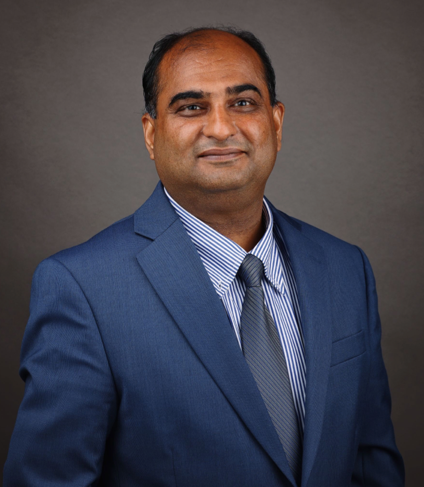
Dr. Avra Brahma is Director of Vehicle Integration at Locomation, Inc.. Dr. Brahma has over 17 years of experience in controls and diagnostics of Diesel, Gasoline and Hybrid-Electric powertrains, both for passenger-car and commercial vehicles. Earlier, Dr. Brahma spent a significant time at Ford Motor Company developing controls and diagnostic algorithms for their diesel pickups. Most recently, Dr. Brahma was involved in the development of Low NOx Diesel powertrains at Cummins. At Locomation, Dr. Brahma is leading Production Vehicle Integration which includes software and performance integration. Dr. Brahma has authored multiple publications and holds multiple national and international patents.
Selina Pan, Waymo, Senior Systems Engineer
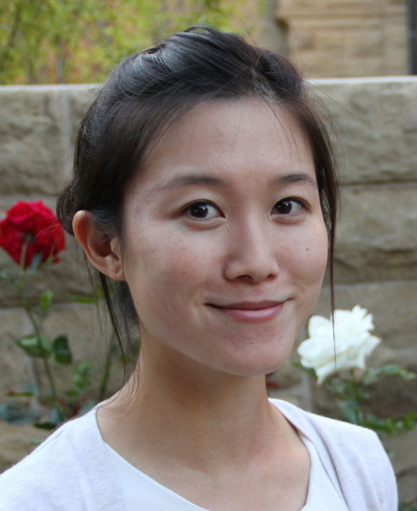
Selina Pan is a senior systems engineer at Waymo. Previously, she was at Toyota Research Institute and Ford, where she worked on planning & control for self-driving cars. Selina received her M.S. and Ph.D. degrees from the University of California, Berkeley in mechanical engineering and her B.S.E. in aerospace engineering from the University of Michigan. Selina founded the women’s employee resource group at TRI and served as the chair from 2018-2020. She also founded the Berkeley Alumni Mechanical Engineering Covid Volunteer Career Panel and Tutoring Program and organized it from 2020-2021.
Toward Dynamic Learning and Decision Making Using Artificial Intelligence in Manufacturing Systems
Special Session TuBT4, October 4, 14:00-15:30, America I & II
Abstract
Over the past several years, manufacturers have faced a number of challenges, including shutdowns due to COVID-19, long lead times for raw materials, and labor shortages. Due to these challenges, manufacturers have constantly looked to improve their ability to address disruptions and disturbances, while reducing cost and maximizing quantity and quality. Companies have looked to integrate tools, methods, and algorithms from the recent explosion of Artificial Intelligence (AI) capabilities into their manufacturing systems. However, a number of challenges require researchers from different disciplines to work together to solve highly multidisciplinary problems. This session will provide an overview of the challenges in creating dynamic decision making and learning in the manufacturing system environment and identify research opportunities for control engineers in academia and industry to contribute to this area of research.
The speakers featured in this session have a variety of technical backgrounds and life experiences. The purpose of this session is to showcase some of the current opportunities available to control researchers.
Speaker
Ilya Kovalenko, Pennsylvania State University
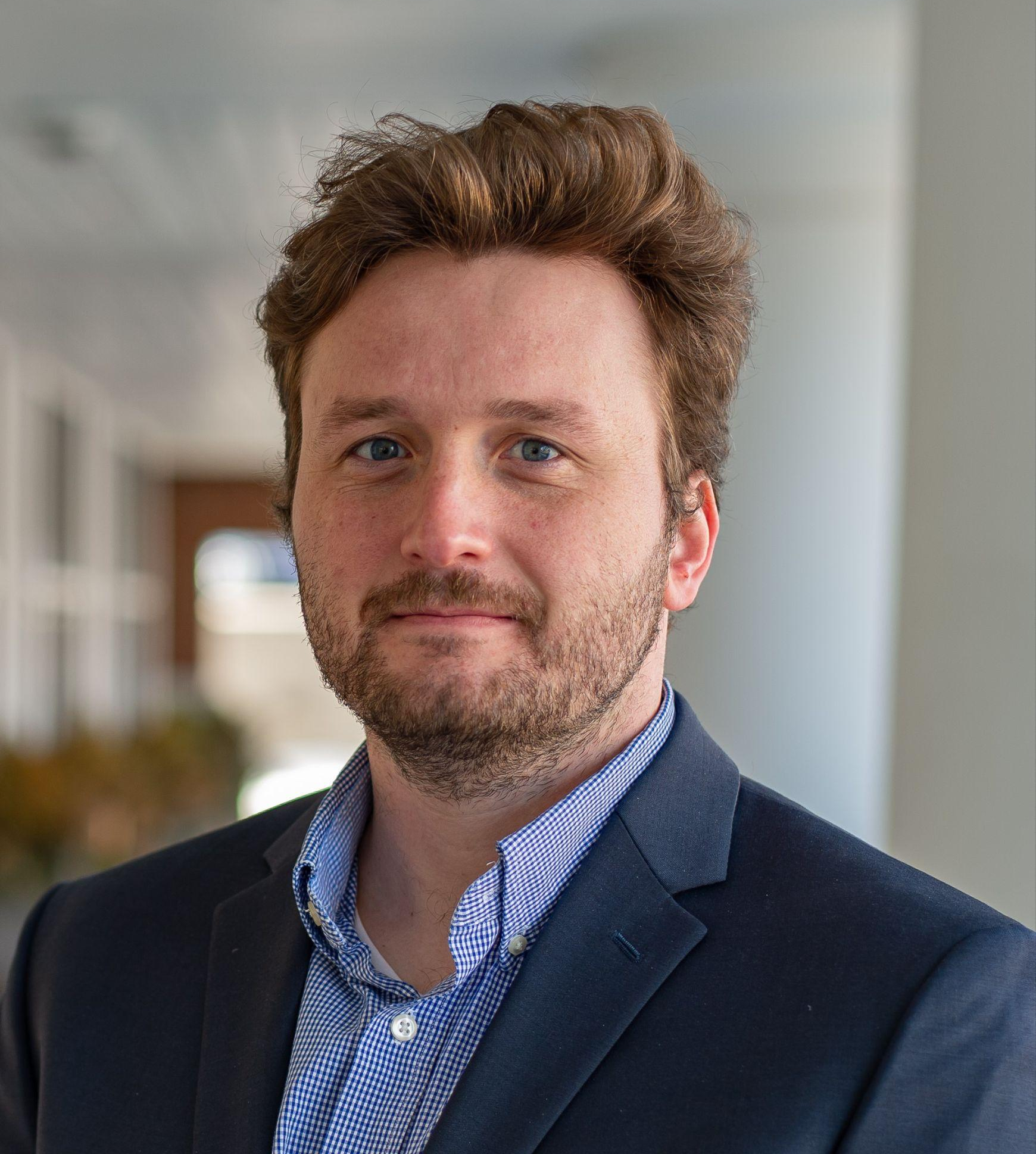
Ilya Kovalenko is currently an Assistant Professor in the Department of Mechanical Engineering and the Department of Industrial & Manufacturing Engineering at Penn State University. He received his PhD in Mechanical Engineering from the University of Michigan (2020), his MS degree in Mechanical Engineering from the University of Michigan (2018), and his BS degree in Mechanical Engineering from the Georgia Institute of Technology (2015). His current research interests lie in the areas of control theory, artificial intelligence, and smart manufacturing, with a focus on cooperative control, cyber-physical systems, and robotics.
Kira Barton, University of Michigan
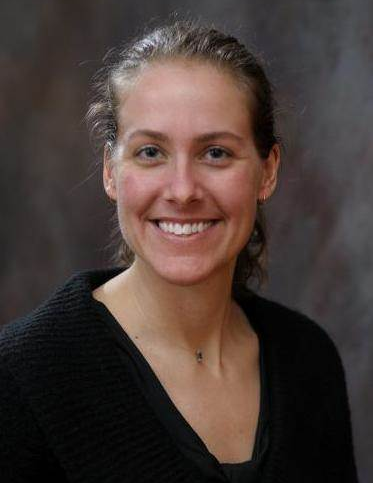
Kira Barton is an Associate Professor in the Robotics Department and Mechanical Engineering Department at the University of Michigan. She received her B.Sc. in Mechanical Engineering from the University of Colorado at Boulder in 2001, and her M.Sc. and Ph.D. in Mechanical Engineering from the University of Illinois at Urbana-Champaign in 2006 and 2010. She is also serving as the Associate Director for the Automotive Research Center, a University-based U.S. Army Center of Excellence for modeling and simulation of military and civilian ground systems. She was a Miller Faculty Scholar for the University of Michigan from 2017 – 2020. Prof. Barton’s research specializes in advancements in modeling, sensing, and control for applications in smart manufacturing and robotics, with a specialization in learning and multi-agent systems. She has published roughly 200 articles in refereed journals and conference proceedings.
Dawn Tilbury, University of Michigan
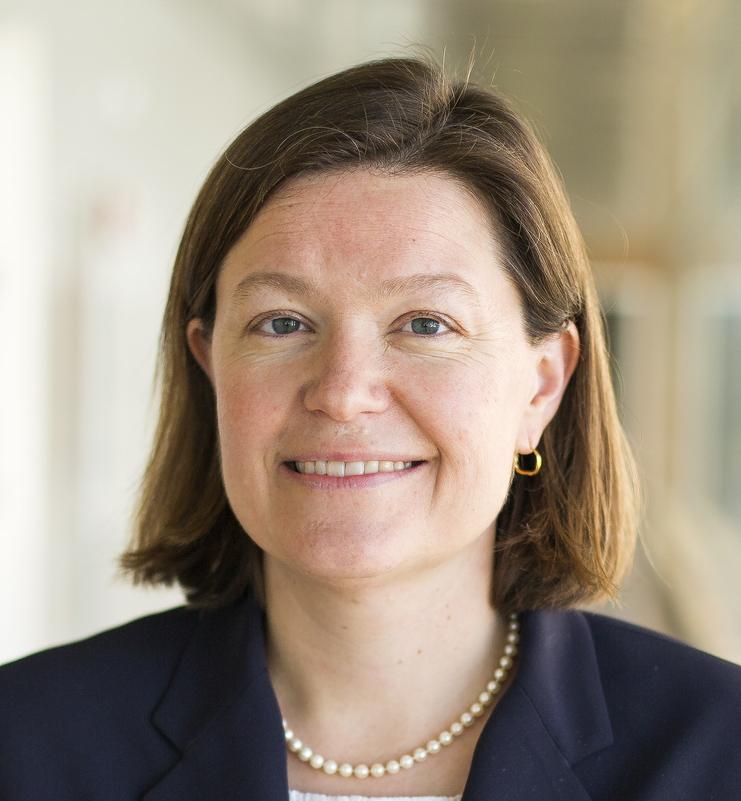
Dawn M. Tilbury is the inaugural Department Chair of Robotics at the University of Michigan. She also serves as Associate Vice President for Research – Convergence Sciences, where she launched the Bold Challenges initiative to bring together teams of faculty with social and technical science expertise to address societal challenges. She received the B.S. degree in Electrical Engineering from the University of Minnesota, and the M.S. and Ph.D. degrees in Electrical Engineering and Computer Sciences from the University of California, Berkeley. She is currently the Herrick Professor of Engineering at the University of Michigan, Ann Arbor. Her research interests lie broadly in the area of control systems, including applications to robotics and manufacturing systems. From 2017 to 2021, she was the Assistant Director for Engineering at the National Science Foundation, where she oversaw a federal budget of nearly $1 billion annually, while maintaining her position at the University of Michigan. She has published more than 200 articles in refereed journals and conference proceedings. She is a Fellow of the IEEE, a Fellow of the ASME, and a Life Member of SWE.
James Moyne, Applied Materials/University of Michigan
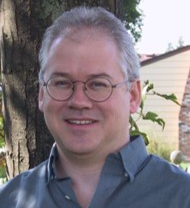
James Moyne is an Associate Research Scientist in the Department of Mechanical Engineering and is also a consultant for standards and technology to the Applied Global Services group at Applied Materials working in microelectronics and pharmaceutical industries. Dr. Moyne has experience in smart manufacturing technologies including digital twin, big data, model-based process control and predictive analytics focusing on predictive maintenance. He is the author of many refereed publications and holds patents in each of these areas. He currently co-chairs the Factory Integration Thrust of the International Roadmap for Devices and Systems (IRDS) for the microelectronics industry, where he served as lead author on the smart manufacturing roadmap for the industry. He also co-chairs the SEMI Information and Control committee semiconductor manufacturing standards effort. Dr. Moyne received his B.S.E.E., B.S.E. – Mathematics, M.S.E.E. and Ph.D. degrees all from the University of Michigan.
Daewon Lee, Samsung AI
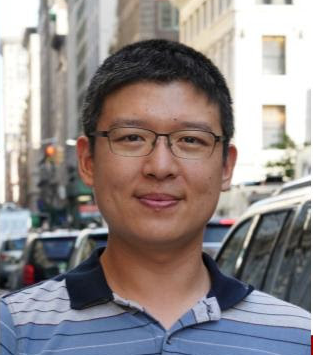
Dr. Daewon Lee received the B.S. and Ph.D. degrees in Mechanical and Aerospace Engineering from Seoul National University (SNU), Seoul, Korea, in 2005 and 2012, respectively. He was a postdoc researcher at the GRASP Lab, University of Pennsylvania from 2015 to 2018. And he joined Samsung AI Center New York in 2018, and is currently a project lead of the team. His research interests include Robotics and AI.
Dr. Meiling He, Rockwell Automation
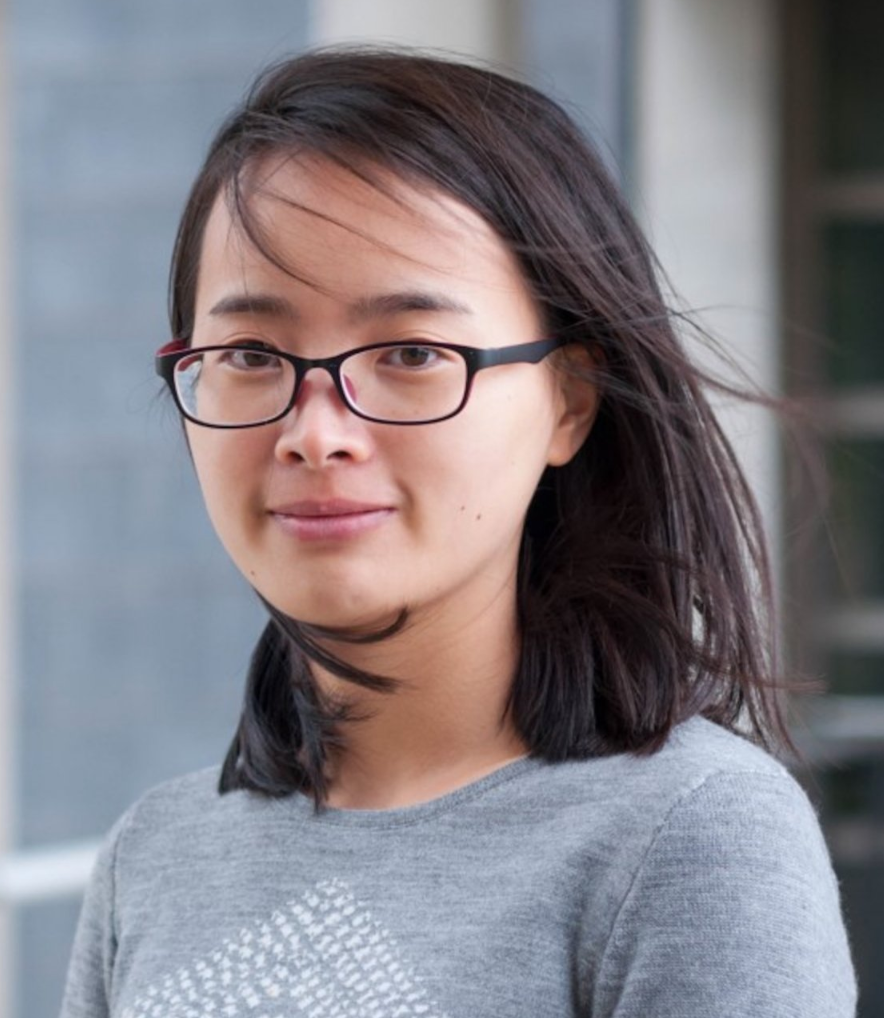
Meiling is a senior data scientist with Rockwell Automation. She joined Rockwell Automation in 2018., and her main responsibility is the development of various machine learning tools to support Rockwell Automation’s advance in IoT-enabled Smart Manufacturing. She received my Ph.D. in electrical engineering from UW-Milwaukee in Dec 2021. She is developing various machine learning-based tools in condition monitoring, anomaly detection, speech recognition, computer vision, scheduling optimization, recommender system, AutoML, and document parsing. She is a mentor at the Milwaukee Robotics Academy.
Robert Landers, University of Notre Dame
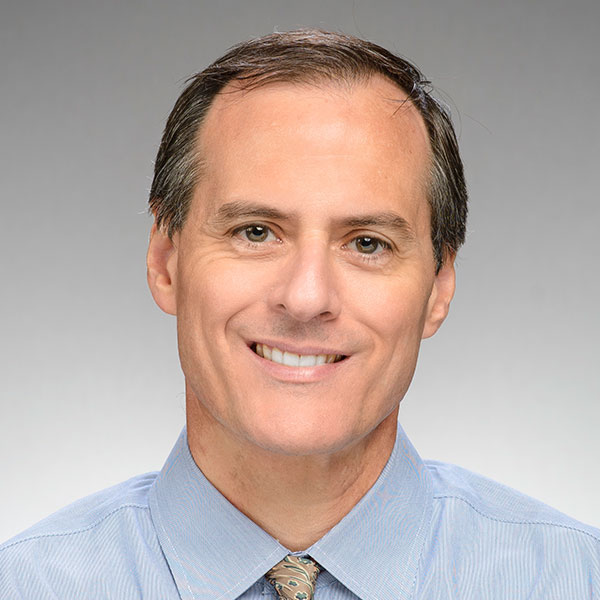
Dr. Robert G. Landers is the Advanced Manufacturing Collegiate Professor in the Department of Aerospace and Mechanical Engineering at the University of Notre Dame. He was previously a Curators’ Distinguished Professor at the Missouri University of Science and Technology and served for three years as a program manager at the National Science Foundation working in the Dynamics, Controls, and System Diagnostics, Foundational Research in Robotics, Cyber Physical Systems, Future Manufacturing, and Leading Engineering for America's Prosperity, Health, and Infrastructure (LEAP HI) programs. He received his Ph.D. degree in Mechanical Engineering from the University of Michigan in 1997. His research interests are in the areas of modeling, analysis, monitoring, and control of manufacturing processes, and in the estimation and control of lithium-ion batteries and hydrogen fuel cells. He received the Society of Manufacturing Engineers’ Outstanding Young Manufacturing Engineer Award in 2004, the ASME Journal of Manufacturing Science and Engineering’s Best Paper Award in 2014, and the ASME Journal of Dynamic Systems, Measurement, and Control Best Paper Award in 2020. He is a Fellow of ASME and SME, and a senior member of IEEE.
Jordan Berg, National Science Foundation

Jordan M. Berg serves as a Program Officer in the Engineering Directorate of the US National Science Foundation. His research interests include nonlinear and geometric control, soft robotics, human-machine systems, and the modeling, simulation, design, and control of nano- and micro-systems. He received the BSE and MSE in Mechanical and Aerospace Engineering from Princeton University in 1981 and 1984, and the PhD in Mechanical Engineering and Mechanics and the MS in Mathematics and Computer Science from Drexel University in 1992. In 1996 he joined the faculty of the Mechanical Engineering Department of Texas Tech University, where he remained until 2018. He began at NSF as a rotator in 2014, and returned as a permanent employee in 2018. At NSF he co-directs the Dynamics, Control, and Systems Diagnostics program in the Division of Civil, Mechanical, and Manufacturing Innovation, and has served on several cross-cutting programs, including the Future of Work at the Human-Technology Frontier: Core Research, Foundational Research in Robotics, EFRI Continuum, Compliant, and Configurable Soft Robotics Engineering, National Robotics Initiative 2.0, Cyber Physical Systems, and the National Artificial Intelligence Research Institutes. He is a Fellow of ASME.
